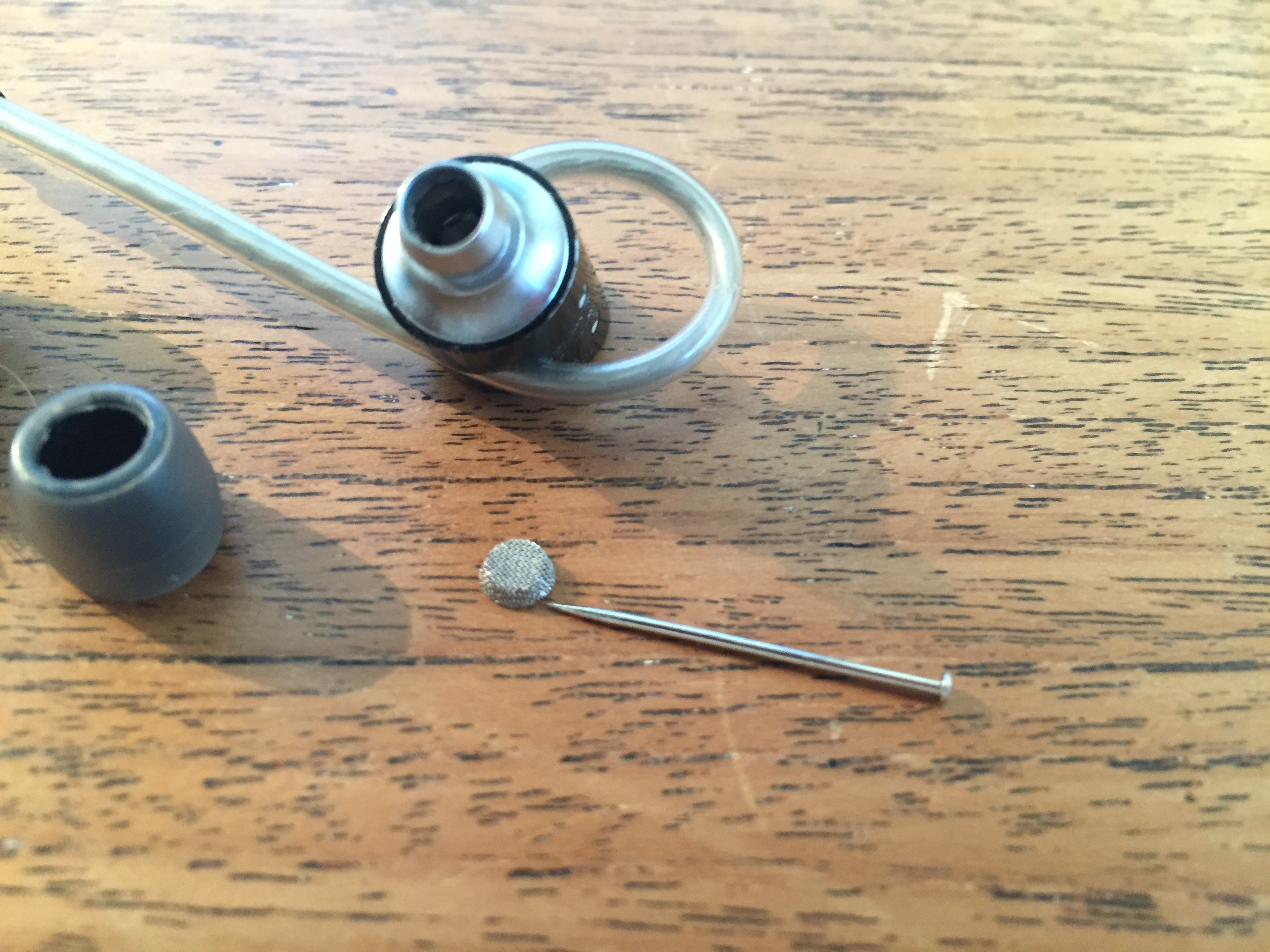After many months of use; the sound level of my B&W C5 in-ears was starting to degrade – to the point where even with volume control turned all the way up on my iPhone, music or conference calls became hard to hear. Clogged!
Google did not have any good results on how to fix this. Common suggestions for in-ear buds include cleaning with a cloth, a soft brush and some detergent (lukewarm soapy water, alcohol etc). This did not work for me – the fine metal mesh in the in-ear piece appeared to be stubbornly clogged.

While some users reported successfully opening the earbuds with a vice and pliers, that seemed too destructive to me.

Luckily, I tried the following as a last resort: carefully sticking a needle in the mesh allows to exert enough pulling force to remove the screen from the earbud.
Taking out the metal screens allows me to clean them easily, fully restoring the sound output to its original, glorious levels.
After cleaning, the mesh screen can be easily placed back in its original position. In my case, the remaining glue residu was sufficient to keep it in place, but you could carefully add a small amount of glue to be safe.
Interesting! A pic or two would be great.
Cheers!
So, I tried this and it worked perfectly. Here are a couple of points:
1) Instead of needle use a seam ripper, which has a sharp enough tip for the purpose but also gives you much more grip and control than a needle.
2) Press the tip of the seam ripper lightly on the corner of the mesh cover at 45 degrees and try to pry it open. The glue B&W used is a sort of silicon glue/sealer, so you won’t need to exert much pressure.
3) If you have the 2nd version, you will note that there are polymer secondary drivers on the back of the mesh cover. Use a pair soldering pliers to carefully remove the polymer drivers (or filters). For me one of them has partially come off and this negatively affected the response of the speaker. These reduce the brashness of the high frequencies while they add depth to the low frequencies. I will probably decide to leave them out entirely and use foam protectors (e.g. complyfoam) from outside instead. I am not sure gluing them back is a very smart move, specially without the type of silicon glue that B&W has used.
4) Now just dunk the mesh covers into alcohol or any other efficient solvent.
Thank you for this great addition!
Bumping this old thread:
Mah, just a comment on secondary polymer drivers: I’ve actually managed to remove and re-attach the thin membrane. Twice 🙂
I used the needle (I’m sure the seam ripper will work as good) to separate the edge of the membrane from the metal mesh. Whilst holding the mesh with two fingers I peeled the membrane off.
The membrane is really tough (does not break easily) and all four (2 pairs of C5:s) came off in one piece each.
Then I cleaned the mesh with alcohol (let them soak a minute first), and brushed off the membranes with a cotton swab, but left as much of the glue as possible.
Joined the mesh and the membrane by pressing them slightly together using whatever glue left, and then put both membrane and mesh back in its original position.
Worked for me, hope someone else have use for the info.
BTW: My original attempt to replace the cable was not as successful, you have probably found the old post where I used a saw to disassemble the drivers… But there is a good guide on cable replacement: https://www.youtube.com/watch?v=aS8Er0MiemE